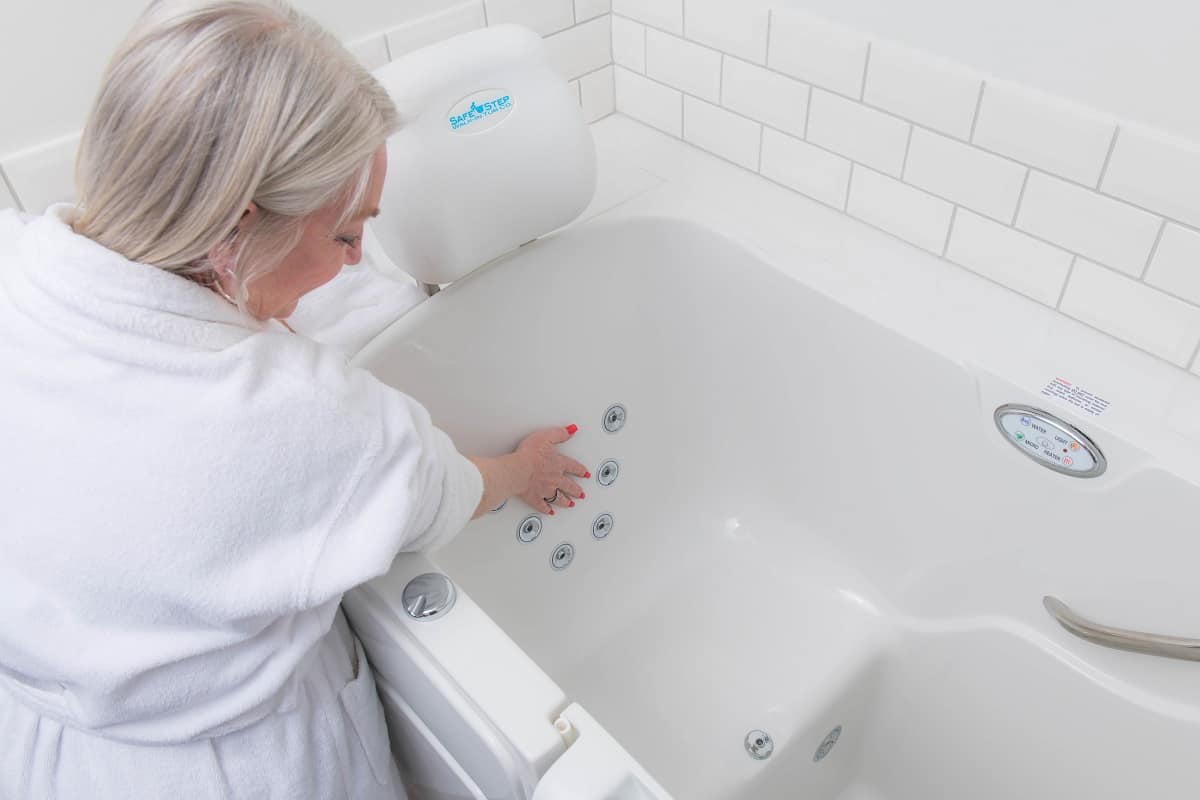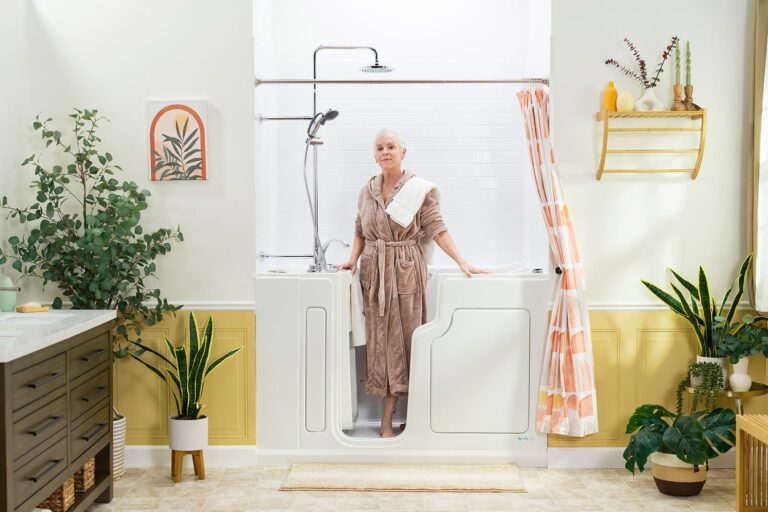Prevent Bathroom Falls with Walk-In Tubs

For those who live with mobility impairment, the simple task of maintaining hygiene in the bathroom can pose quite a few dangers. Accidental falls represent one of the primary causes of injury in the home among seniors, as the loss of balance or slipping can result in a debilitating injury from which some can’t recover. The combined factors of slick surfaces, ever-present moisture, and few stable handholds for leverage combine to endanger people who have limited mobility.
For those who have elected to age in the home, there’s no doubt that the bathroom poses a daily danger. That’s why many homeowners aging in place decide to install a walk-in bath to help them better navigate the bathroom in a safe way. A walk-in tub is one of the best ways to mitigate many of the threats that exist for seniors in the bathroom space. But how exactly can a walk-in bathtub make bathrooms safer for the mobility impaired? Keep reading to find out more about a few key features of walk-in tubs that can remove fear and danger from the bathroom equation.
Lower Step-In Threshold
Mobility impairment can impact the lives of those who live with it in many diverse ways. However, one common factor shared among many seniors is difficulty in lifting the feet and legs while maintaining balance. For example, stepping over the side of a traditional bathtub, which could be as high as 18 inches, represents a considerable challenge. It’s not just about a limited range of motion when it comes to stepping into the tub, as many seniors also suffer from impaired balance. That combination of factors can be dangerous when accessing a traditional tub, but a walk-in tub is specially designed to deal with those concerns. A walk-in tub features a water-tight door in the sidewall that can be opened to facilitate entry and exit. The door can allow access without the need for stepping over the sidewall of the tub, lowering the threshold for entry from nearly two feet to a mere few inches. That can reduce the risk of balance loss that can lead to falls that result in severe injury.
Additional Handholds
Another common problem for the mobility impaired when it comes to the bathroom space is the shortage of handrails in the traditional bathroom. In order to maintain leverage and avoid dangerous falls, many seniors require a stable, solid place to maintain a firm grip when getting in and out of the tub area. Few bathrooms are equipped with adequate handholds, especially around the shower area. However, most walk-in tubs include several robust grab bars that provide seniors with a steady way to attain leverage when moving in the tub. That can prevent falls by improving balance and stability, but it also provides an important safety feature if a user does slip, as they can hold the bar to keep from falling to the floor of the tub.
Grippy Flooring
Slips are an issue in the bathroom for almost everyone, but they’re especially dangerous for seniors with reduced mobility. Unlike falls, which may simply impose the force of gravity on the victim, a slip can create additional inertia, which can result in greater injury. Many traditional bathtubs have smooth bottoms that feature little, if any, grip to provide traction and prevent slips. However, walk-in tubs for seniors often feature aggressive texturing on the bottom of the tub to reduce the chances of slipping and provide a more trustworthy surface for standing, even when that surface is wet.
If you or a loved one plan to age in the home, consider installing a walk-in tub to alleviate many of the dangers associated with the bathroom. To learn more about the ways that walk-in tubs can help prevent falls in the bathroom, contact Safe Step Walk-In Tub Company at (800) 346-6616.


